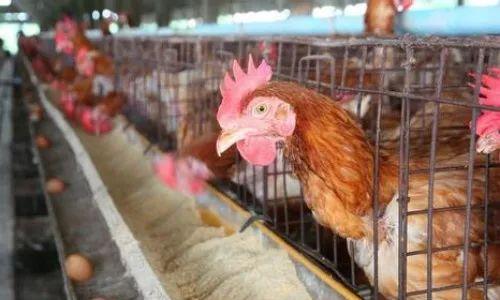As the saying goes: the disease comes from the mouth, and the health must be based on a healthy diet!
Living standards continue to improve, people's consumption concepts are gradually changing, in the past it was possible to eat meat, now it is to eat good meat.
However, driven by economic interests, there is no shortage of merchants hanging sheep's heads to sell dog meat, posing as "free-range chickens" with "feed chickens". So how do we distinguish between a real "free-range chicken" and a "feed broiler chicken" in the process of purchasing?
I want to buy real free-range chickens without spending money
You also need to polish your eyes and discern carefully.
01. The feeding method is different

Free-range native chickens: Free-range breeding in the forest, feeding on cordyceps and grains. The range of activities is wide, the amount of exercise is large, and it is basically sold until more than 18 months, and the 2-3-year-old native chicken is a tonic treasure.
Feed chicken: feed, centralized captivity, large scale of breeding, small activity space, short feeding cycle, usually no more than 5 to 8 months will be sold.
02. Chicken feet and chicken heads are different
Free-range native chicken: the chicken claws are thin and long, rough and powerful, with thick cocoons on the soles of the feet and smaller chicken heads.
Feed chicken: the chicken feet are short, the claws are thick, the bottom of the chicken feet is relatively "delicate", and the chicken head is larger.
03. Chicken crown is different
Free-range native chickens: the cock crown is large and red, and the hen cock crown is small, and the blood is full and full.
Feed chicken: The crown of the chicken is relatively small, and the blood color is dull.
04. Chicken mouth is different
Free-range native chickens: foraging autonomously in the wild, the chicken mouth is sharp, and the beak hook is obvious.
Feed chicken: there is no beak hook, the chicken mouth is short, giving people a gentle feeling.
05. The appearance is different
Free-range native chicken: The free-range native chicken is slender and long, and the front chest and chicken legs are relatively strong. The coat is brightly colored, shiny, and its appearance is sharp and aggressive.
Feed chicken: the body is more rounded and bloated, and the meat is loose. The coat color is dark yellow, and the appearance is slightly dull.
06. Pores are different
Free-range native chicken: the skin of the chicken is thin and firm, the pores are thin and mesh-like, and the skin color is yellow.
Feed chicken: the outer skin is pale and the finish is high.
Therefore, when selecting, you can use your hands to pluck a few chicken feathers to see the pores at the root.
07. The size of the ingotary sac is different
The sac is part of the chicken's digestive system and is located on the front breast of the chicken and plays a role in storing food.
Free-range native chickens: Because of autonomous foraging, food will be stored in the ingotes and digested slowly, so the ingress sacs are larger.
Feed chicken: Feed grows up, is fed regularly and quantitatively, does not go hungry, and the food sac becomes very small.
08. The meat quality and taste are different
Free-range chickens:
(1) The chicken texture is clear, the chicken skin is tough and elastic, and it is not easy to tear off.
(2) It is not easy to cook, and the muscles are firm. Delicious, rich and natural. The chicken is not particularly tender but tough and has a fresh and sweet taste. The bones are not hard, the skin is thin, and there is less grease. The chicken broth is transparent and clear, and the fats are agglomerated on the surface of the soup.
Feed Chicken:
(1) The chicken is light in color, soft to the touch, and the chicken skin is easier to tear off.
(2) The broth is turbid, the surface fat agglomeration is less, and the taste is poor.
A few must-haves for free-range chickens
(1) Ecological stocking must be no less than 180 days, to ensure a certain amount of exercise, chicken fat will be very small, meat essence is more full!
(2) Feed on natural feed such as cordyceps and grains, and do not feed feed or additives!
(3) Free-range native chickens, bright coat color, healthy appearance, large and ruddy crown!
(4) The meat is firm, the soup is umami, and the taste is delicate and chewy!
In line with the above points, congratulations on buying a natural free-range, pure quality native chicken.